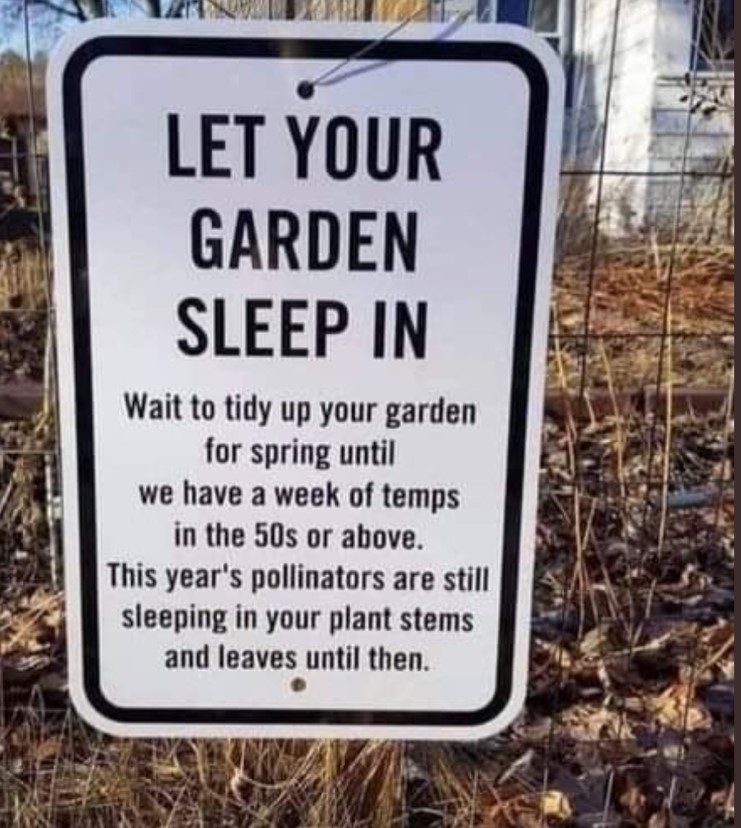As the weather begins to cool this month, gardeners’ thoughts will turn towards putting their gardens to bed. Here is the most trouble-free way of preparing your garden for winter—don’t do anything! Whew, didn’t that just free up more time for you? Perhaps it saved you the payment your landscaper would receive for doing it.

Little wood satyr hiding among leaves
For millions of years on earth, before humans even existed, the land evolved to take care of itself without anyone “putting the garden to bed.” By cleaning up and removing leaves and stems, many butterflies, beneficial insects, and other invertebrates are being eliminated from the landscape. These essential creatures spend
the winter insulated under a blanket of leaves that protect them. Many native bees are stem-nesting bees that hide and create nests in the broken stems of plants. Leaving hollow plant stems of various heights helps to save our declining bee populations by providing them with habitat. Our magical fireflies need leaves and tall grasses to hide, not a carpet of mown grass.
We need to change our way of thinking when it comes to landscapes. Is a room inside our homes furnished only with area rugs more beautiful than one with furniture and other decor? If not, then why should a mowed lawn devoid of life be considered more attractive than a garden with architectural plants that provide habitat for a diversity of insects? Join the many homeowners across the country who are embracing the “leave the leaves” philosophy and making their properties hospitable to caterpillars, bees, fireflies and other invertebrates that hide in leaf litter and stems over the winter. Is your landscaper urging you to clean up? Consider whether he or she is knowledgeable about garden ecology or motivated by their own economic interest.
So when is the right time for garden cleanup? Wait well into spring, as long as possible and preferably into at least May when the majority of insects have become active. A thin layer leaves won’t kill your lawn. If you are concerned about a heavy leaf layer, move those leaves into one pile somewhere on your property and give butterflies and fireflies a chance to live. Some people advise chopping or shredding leaves and using them as mulch, but this is not the ecological way to preserve insects—they would be shredded along with the leaves.
This year, save yourself time and money while contributing to a diverse, healthy ecosystem on your property by leaving the leaves well into spring.
An article with more details on cleaning up the garden was published earlier in Laurelwood Arboretum’s E-News and can be found here. For a free video on spring cleanup visit Native Plant Channel.

